How many hours do you spend sitting down every day? Between my day job and editing content, I spend WAY too much time sitting at my desk.
They say sitting is the new smoking… Whatever that means. But one thing is clear, all that sitting isn’t good for anyone. So today I’m doing something about it and building a DIY standing desk converter.
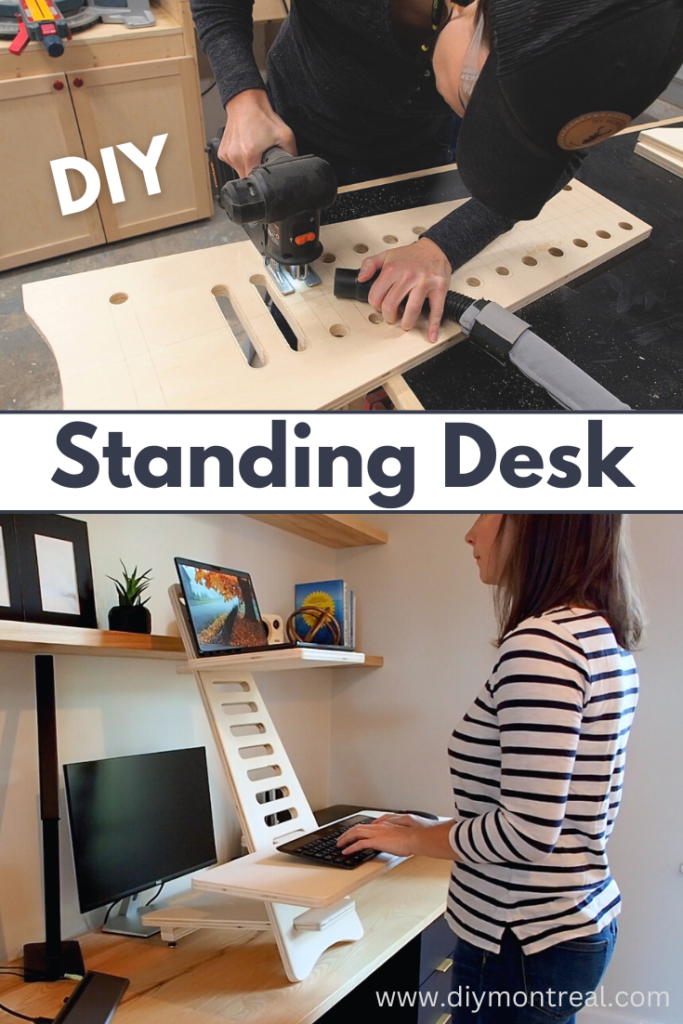
I’ll show you how to build a desktop accessory that allows you to transform any desk into a standing desk. It took some prototyping, a lot of tinkering and a little guesswork, but ultimately I figured it all out.
My design isn’t perfect but I’ll still provide all the measurements I used if you want to use that as a starting point to do some prototyping of your own (or you can copy what I did and it’ll work too!).
Tools and Materials I used (affiliate links)
- 3/4-inch premium plywood
- Leveling feet (optional)
- Straight bit with bearing
- V-notch bit
- Roundover bit
- Radius Jig
- Forstner bit
- Double-sided tape
Dimensions (inches) – Provided for personal use only / Not for commercial production or resale
- >> Back <<
- Overall: 34 x 13-3/4
- Tapered towards the top – width at top: 6-1/2
- Curve at the bottom: measure 2 inches in from the bottom on each side then use a large circular object to trace the curve
- 13 slots measuring 6 x 1 on center (spaced 1 inch apart starting from the top); bottom slot 9 x 1, 3-1/2 from bottom
- >> Base <<
- Overall: 16 x 13-3/4
- Tapered towards the top – width at top: 7-1/2
- Curve at the bottom: measure 2 inches in from the bottom on each side then use a large circular object to trace the curve
- >> Keyboard shelf <<
- Overall: 32 x 14 including tongue that’s 5 wide and 4 deep
- >> Laptop shelf <<
- Overall: 14 x 14 including tongue that’s 5 wide and 4 deep
Transform any Desk Into a Standing Desk with this DIY Standing Desk Converter
There are 4 parts to this standing desk converter all made from 3/4 inch plywood and held together simply by friction fit with the help of gravity.
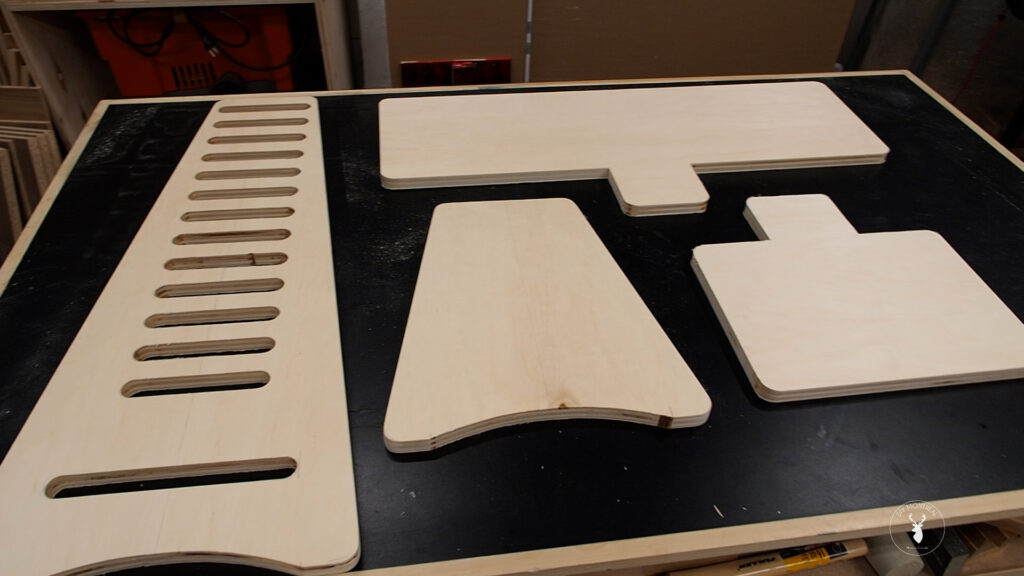
In the video I go through some testing and prototyping to figure out the angles, dimensions and whether or not I need to add V-notches to the shelves. I encourage you to watch the video for details on that process, but here I’ll skip that step and get right into the build.
Rough Cut 4 Parts
To start off, I’ll use a track saw to break down the sheet of plywood into blanks (i.e. the overall dimensions found above), then start shaping each of the pieces one by one.
Adjustable Shelves
The shelves are the easy part. I’ll simply trace out a tongue on each shelf and cut them out using my bandsaw and jigsaw. Either one will work. If you struggle with cutting straight lines with a jigsaw, try clamping down a speed square as a guide.
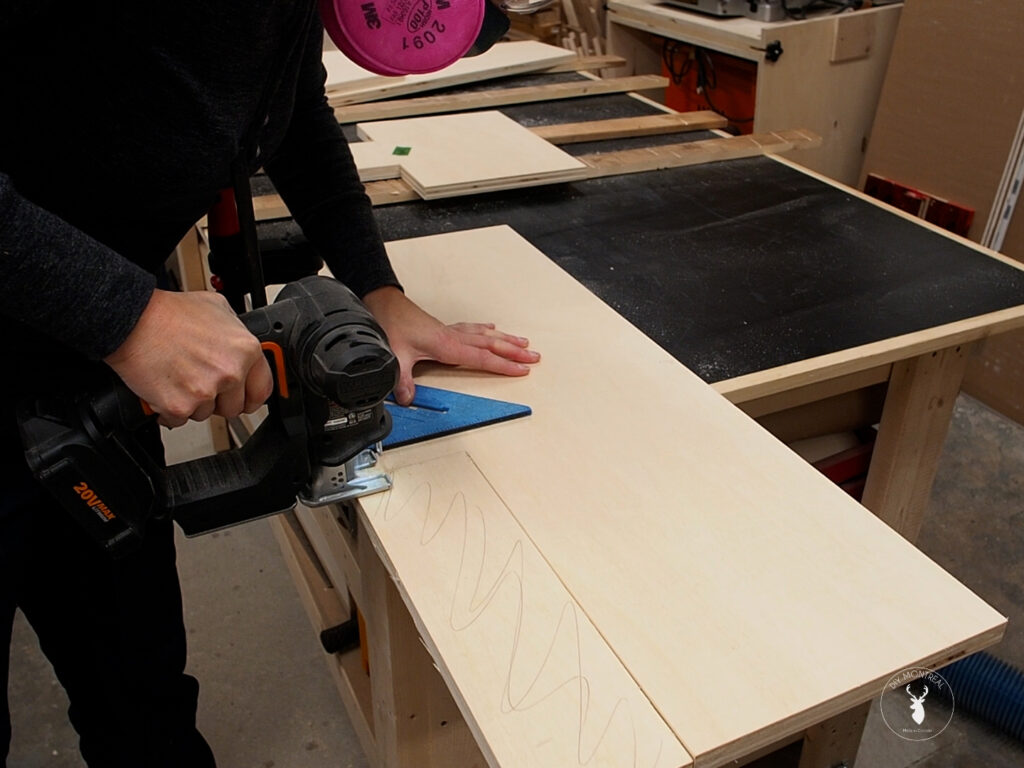
Base
The base has a trapezoid shape. After tracing it out, I’ll use my track saw to refine the angular shape.
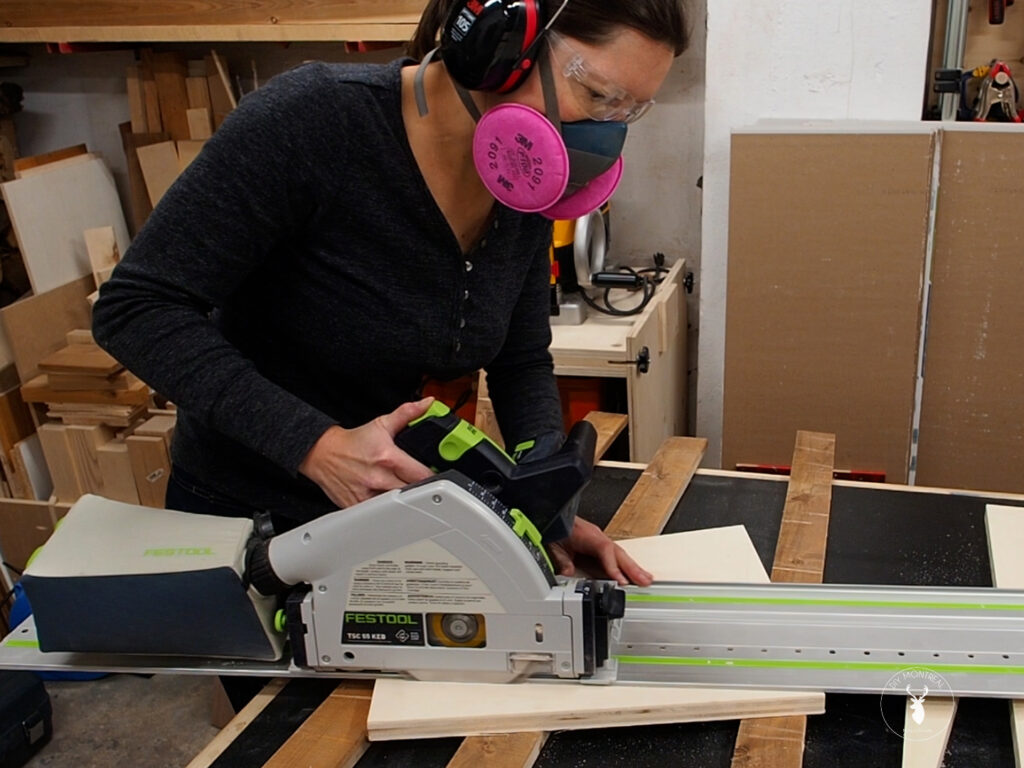
As for the curve on the bottom, I’ll use my bandsaw. Now I’ve said this before: my bandsaw cutting skills aren’t great. So, trying to cut 2 identical curves is wishful thinking at this point. Instead, I’ll use some scrap ply to cut out a template. If I mess it up, I’ll make another one until I’m happy with the curve.
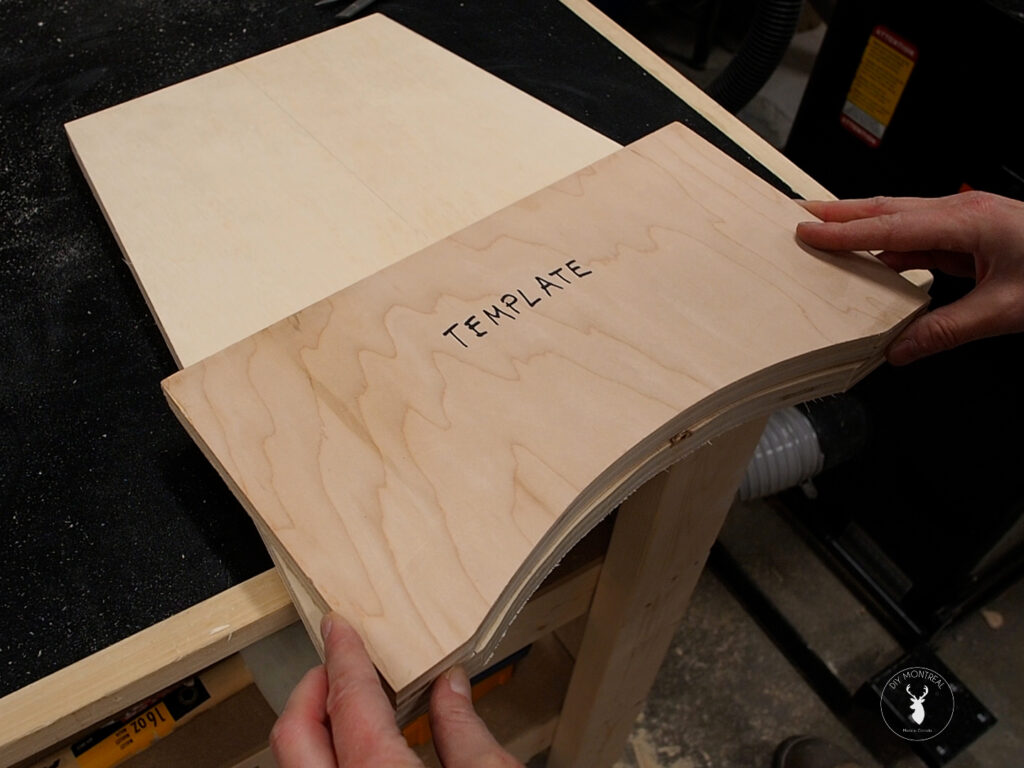
I can then use some double-sided tape to secure the template to the base and use that template to transfer the curve over to my workpiece using a router with a pattern bit. Note that you still need to cut a curve on the base first, but just make sure to stay well inside the line and let the router finish the job.
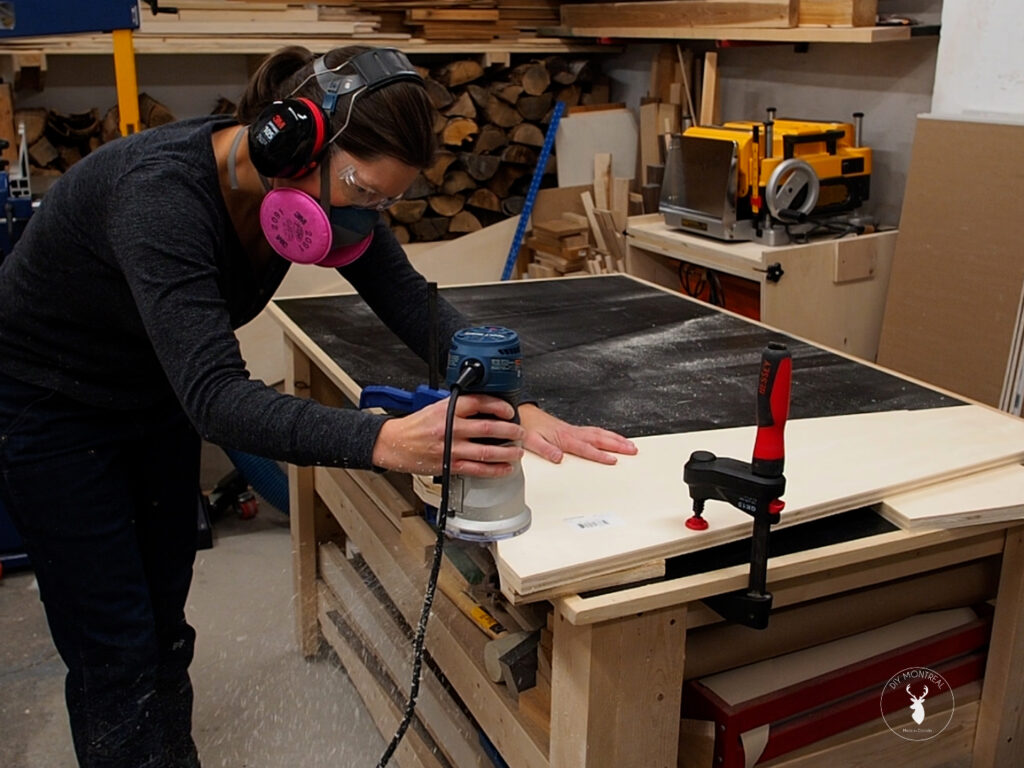
Back
The back board has a trapezoid shape just like the base, but it’s a good idea to trace out the slots before cutting the board.
After tracing a center line, I’ll start at the top and start marking every inch, almost all the way to the bottom. I can then use my template to trace out the slots with a pencil. It helps to use a combination square to ensure the template (and therefore the slots) are perfectly perpendicular to the edge of the board.
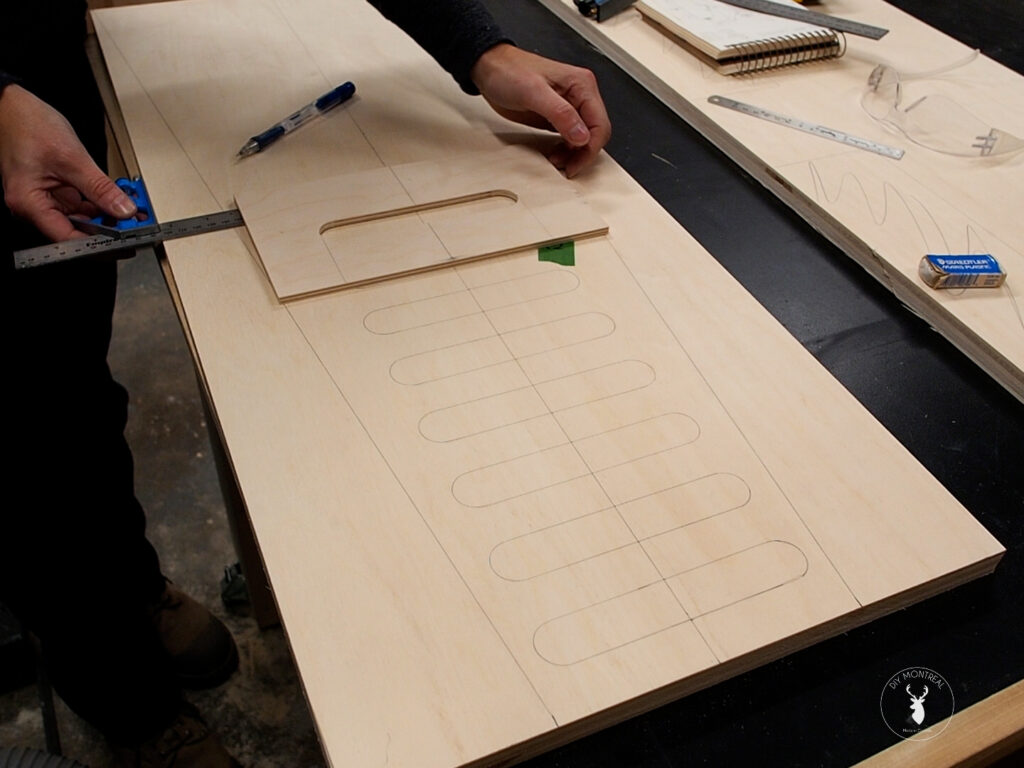
There are 13 identical slots to be cut out of the back board. To make cutting them easier and the ensure their consistency, I’ll make a template out of 1/4-inch plywood. First I’ll use a 1-inch Forstner bit the drill out each end of the slot, then remove the waste in between using a jigsaw, making sure to stay inside he lines. By securing temporary guides along my layout lines I can then use a router with a pattern bit to finish cutting out the slot.
MAKE A TEMPLATE
To cut the slots, I’ll first use a slightly undersized Forstner bit to drill out each end of the slot. I want to make sure I’m staying inside the lines and let the router do the work. I’ll then remove the waste with a jig saw.
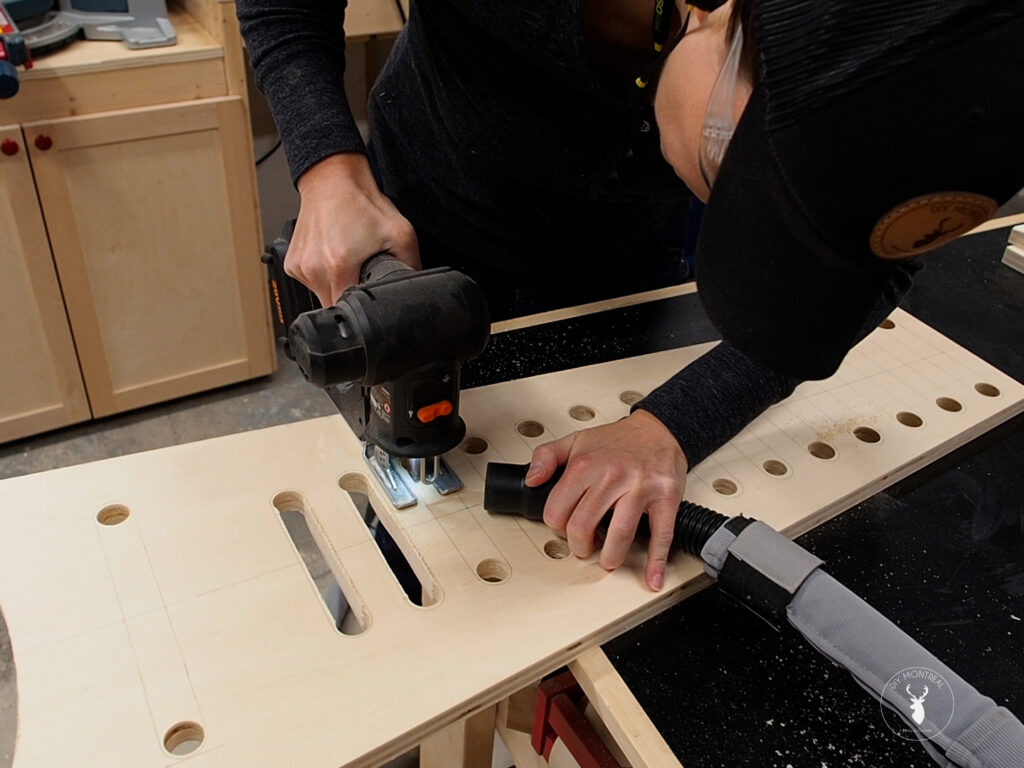
Using double-sided tape, I’ll secure the template to the back board, lining it up perfectly with the pencil marks. I can then use a pattern bit to remove the waste and refine each slot.
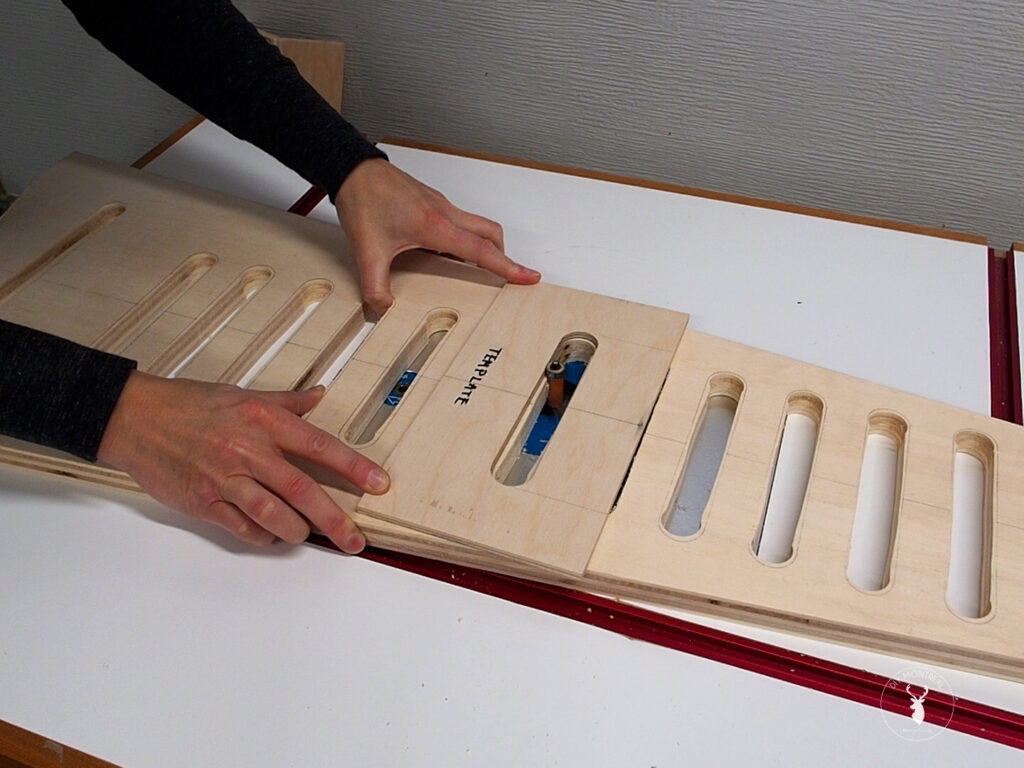
Refining the Shapes
Now that all the parts are ready, I’ll round all the sharp corners using a radius jig with a pattern bit. You can also simply use an orbital sander to achieve the same result.
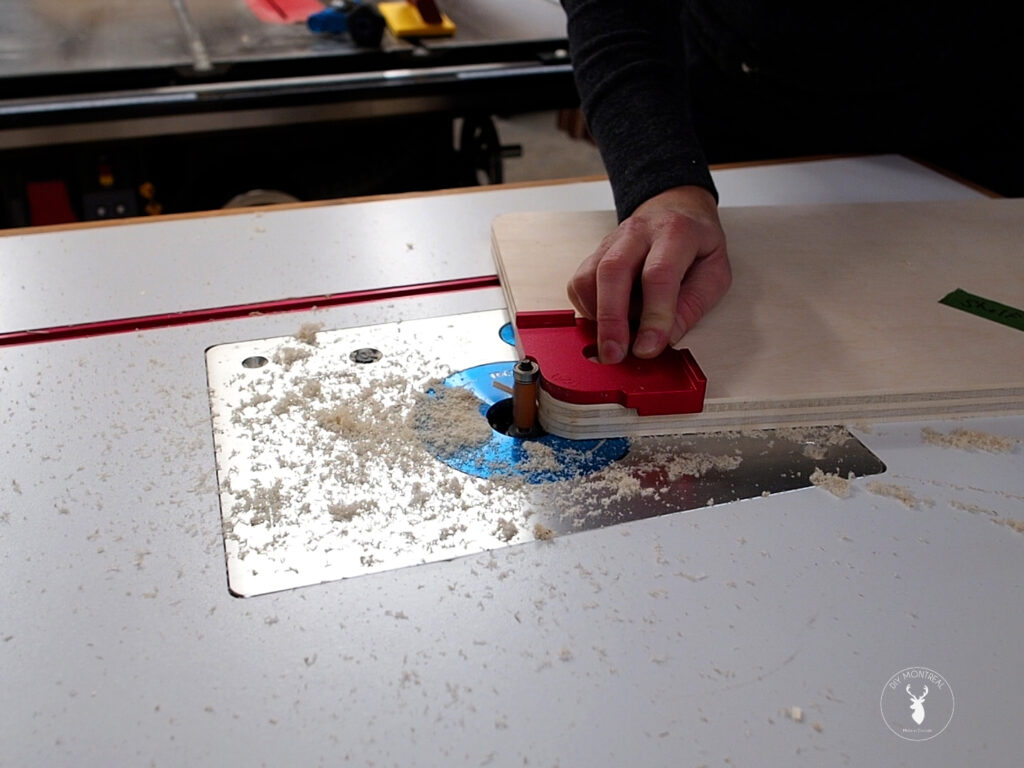
With that done, I’ll use a small roundover bit and go over all of the edges to remove any sharpness and make all the edges smooth.
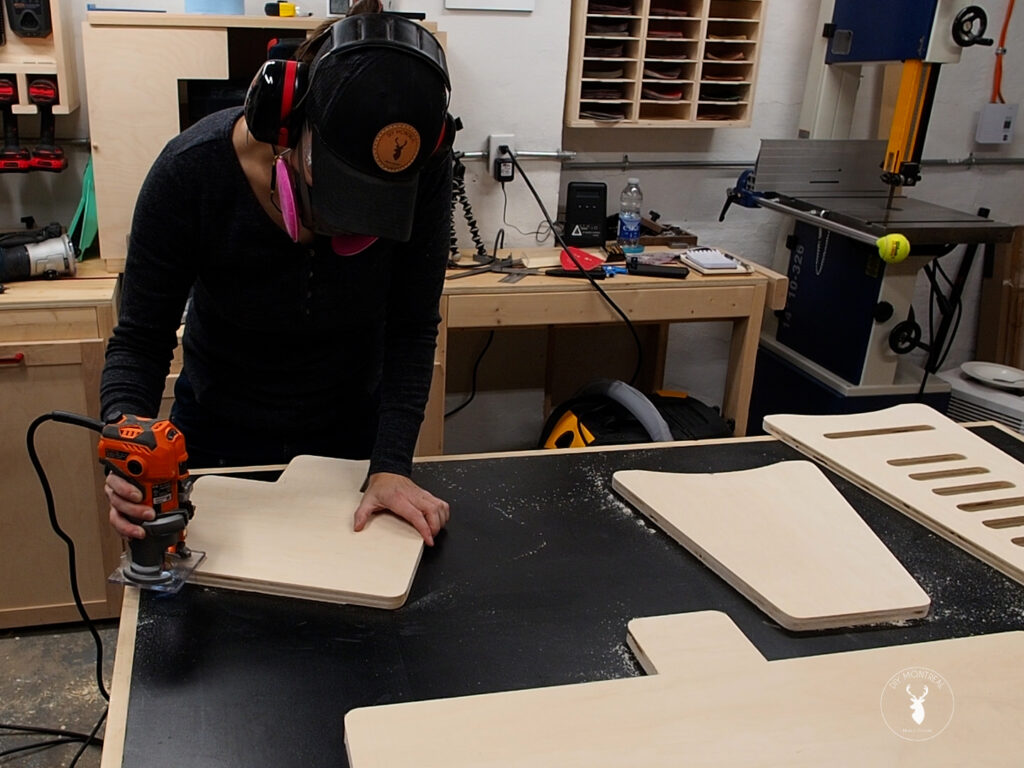
V-notches
At this point I assembled the standing desk converter by sliding the base into the bottom slot and inserting the tongues of the shelves into one of the 13 slots in the back board. It looks like this project is complete except one thing. The angle of the shelves are totally off and they lean back way too much.
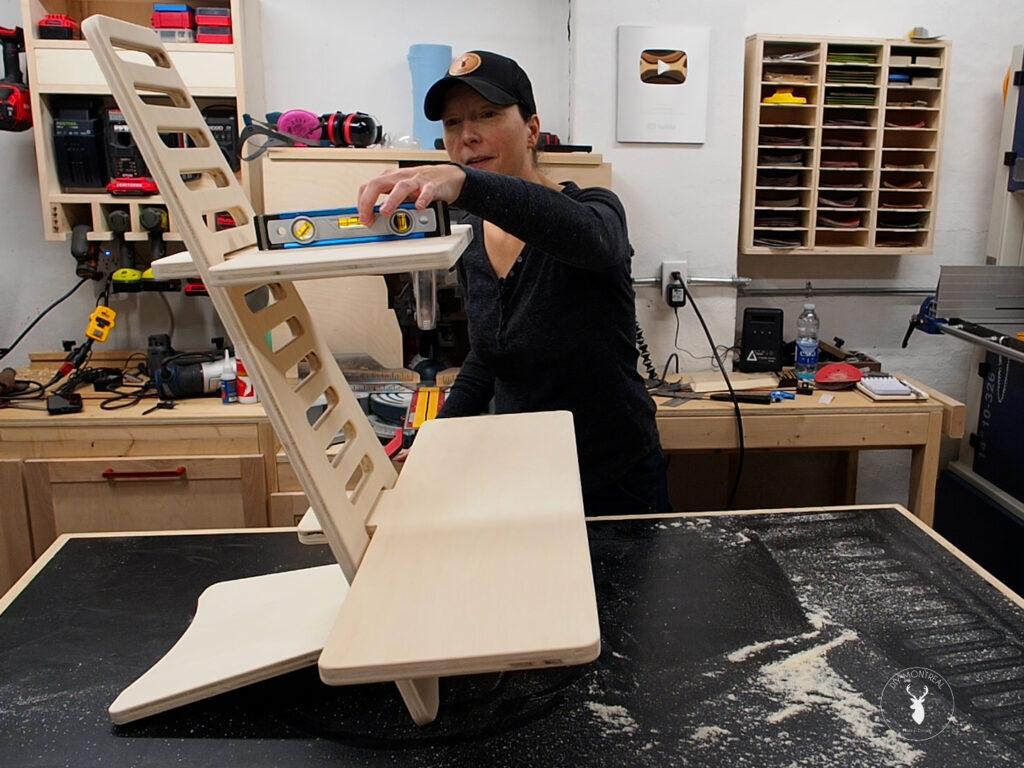
There are a couple easy fixes I’ll use to remedy this and try to bring the shelves closer to horizontal.
First, I’ll add a V-notch to the base and the tongue of each adjustable shelf. The V-notch should be shallow – about the depth of the V-tip of the bit itself – and must be on the bottom of the tongue part.
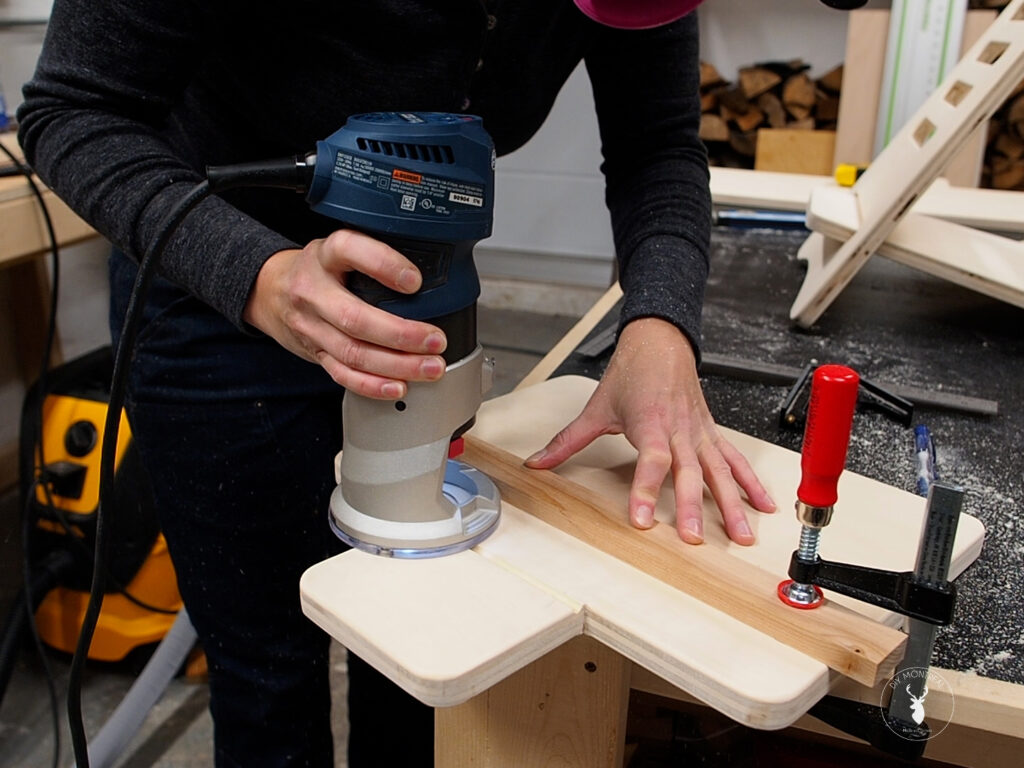
As for the V-notch in the base, it goes on the bottom as well, close to the front side (the side that’s tapered) roughly 2 inches from the edge.
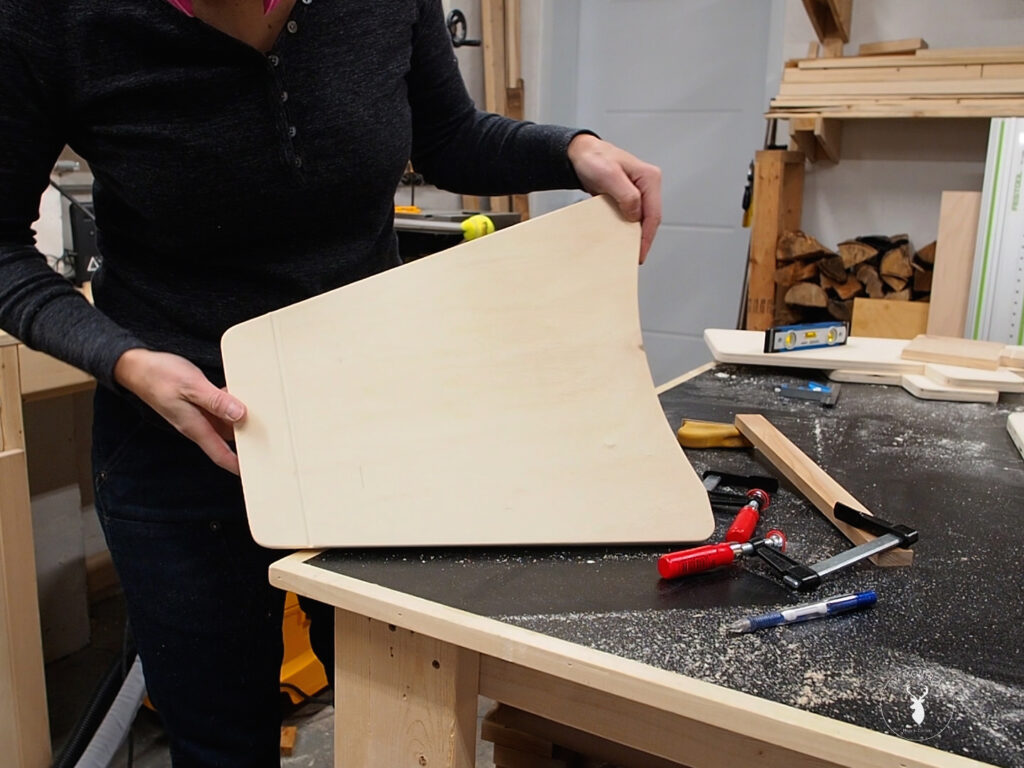
With the notches made, you’ll notice that the shelves snap into place and are much more secure.
Tweak the inclination
If the shelves still lean back too much, there’s a quick fix. I cut 2 strips of plywood that I added under the rear end of the base. For simplicity, I also added levelling feet to the strips so I can tweak the adjustment as need be.
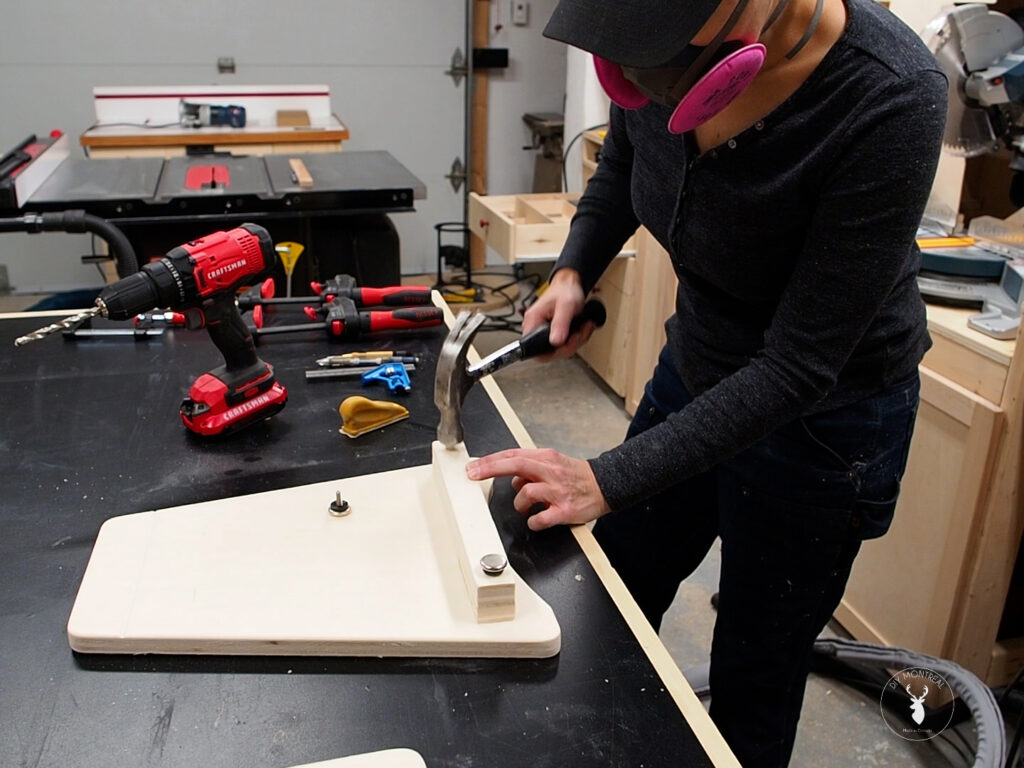
Assemble the Standing Desk Converter
The standing desk converter is easy to assemble by simply sliding in the base and the shelves until they snap into place. This will be a welcome addition to my home office. I spend so much time sitting at this desk, so having the flexibility to stand up to work every once in a while is such a treat!
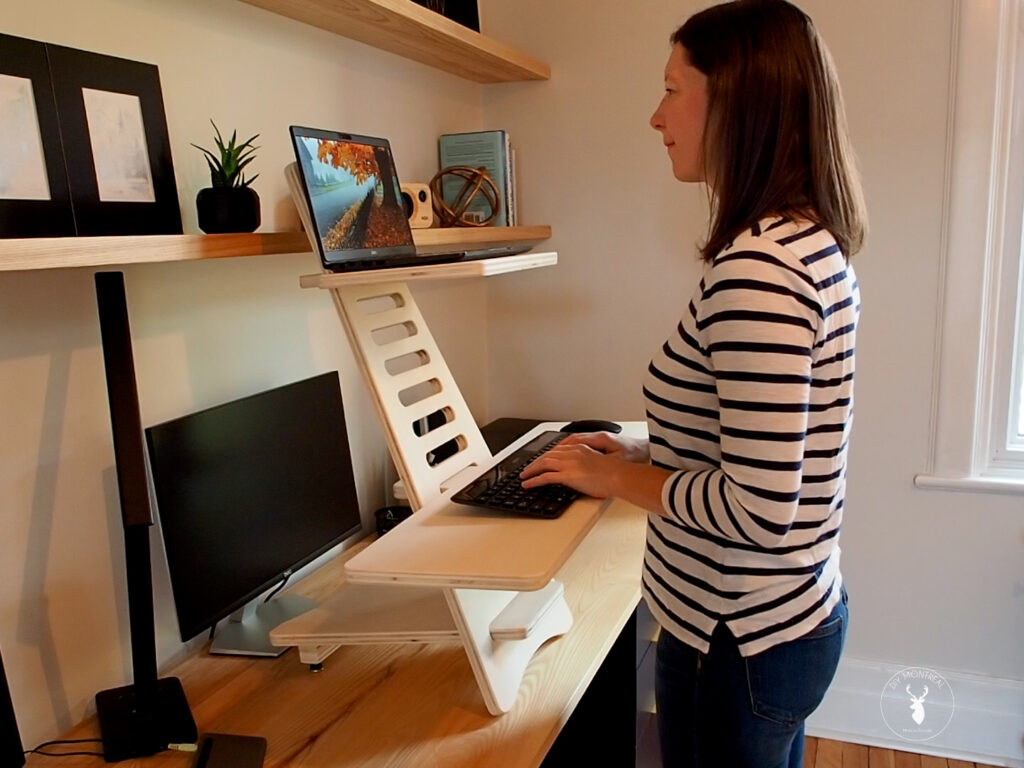
If you’re curious about my home office setup, be sure to check out the drawer cabinets, solid wood desk top and matching floating shelves I recently built.

5 comments on “DIY Standing Desk Converter”